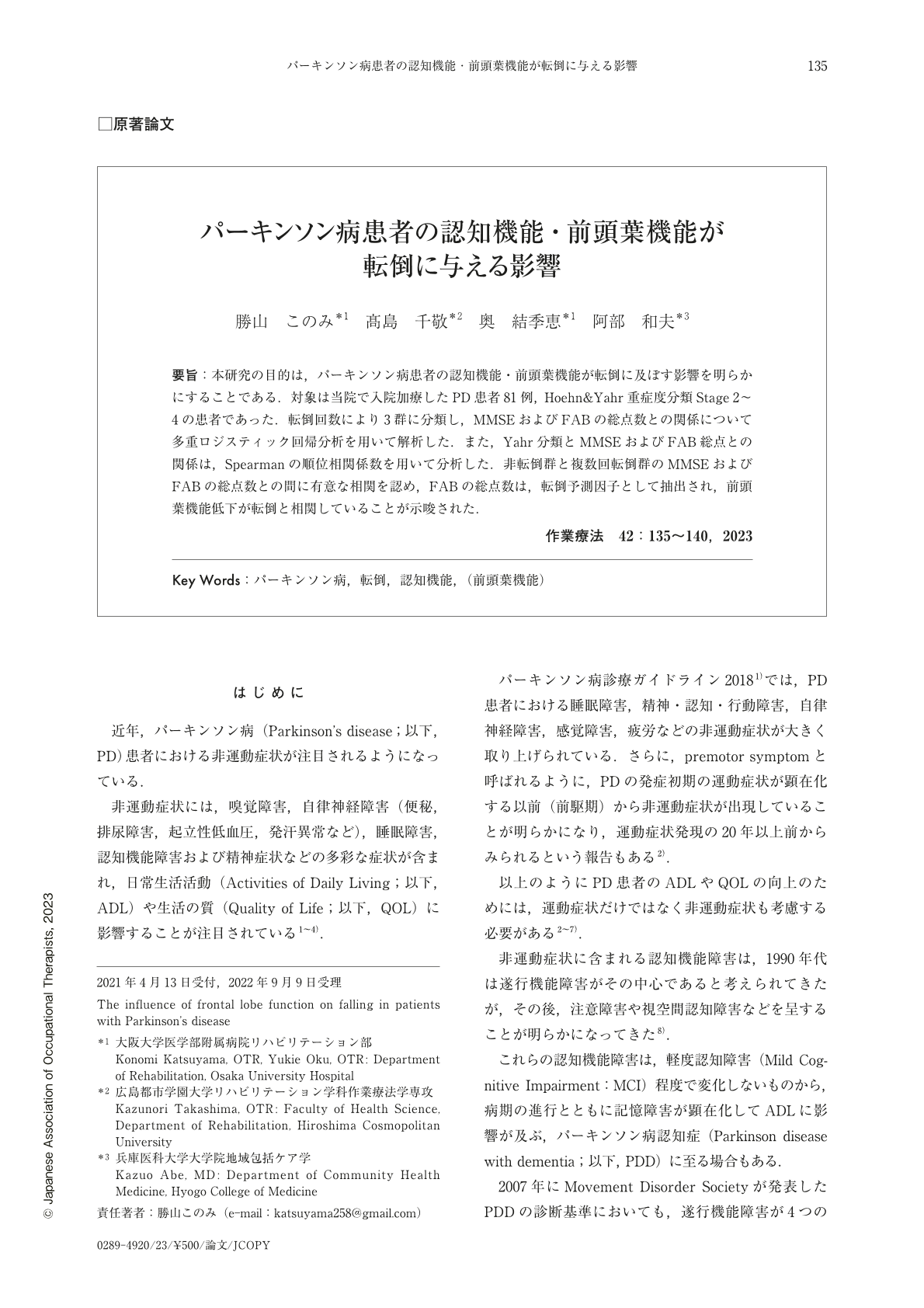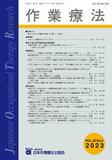Japanese
English
- 販売していません
- Abstract 文献概要
- 1ページ目 Look Inside
- 参考文献 Reference
要旨:本研究の目的は,パーキンソン病患者の認知機能・前頭葉機能が転倒に及ぼす影響を明らかにすることである.対象は当院で入院加療したPD患者81例,Hoehn&Yahr重症度分類Stage2〜4の患者であった.転倒回数により3群に分類し,MMSEおよびFABの総点数との関係について多重ロジスティック回帰分析を用いて解析した.また,Yahr分類とMMSEおよびFAB総点との関係は,Spearmanの順位相関係数を用いて分析した.非転倒群と複数回転倒群のMMSEおよびFABの総点数との間に有意な相関を認め,FABの総点数は,転倒予測因子として抽出され,前頭葉機能低下が転倒と相関していることが示唆された.
The purpose of this study is to investigate whether cognitive dysfunction, especially frontal lobe dysfunction, is a predictive factor of falls in patients with Parkinson's disease (PD). We recruited 81 PD hospitalized patients. The severity of patients was evaluated by Hoehn-Yahr (H-Y) staging. All patients were ranked into stages 2 to 4, and all patients could walk without aids. One month prior to hospitalization, the patients were categorized according to their fall history: Group 1 consisted of patients without falls, Group 2 consisted of patients with one or two falls, and Group 3 consisted of patients with more than two falls. Spearman's rank correlation analyses were used to compare the severity of H-Y with total scores of MMSE, and with total scores of FAB among three groups. We also analyzed the correlation between falls and total scores of MMSE, and total scores of FAB using multiplex logistic-regression analyses. The results of which demonstrated that total scores of FAB were useful for predicting falls, and PD patients with total scores of FAB below 13 out of 18 may have more tendency to fall. In conclusion, frontal lobe dysfunction may be the riskiest predictive factor for tendency of falls.

Copyright © 2023, Japanese Association of Occupational Therapists. All rights reserved.


